World Athletics@TDK
[No. 8 Javelin Throw] Leveraging Aerodynamic Lift for a Great Hurl

- The javelin throw, a traditional event since the ancient Olympics

- The javelin throw produces the greatest distances among throwing events

- Javelin throw’s rules were revised to keep throws under 100 meters

- Athletes must target 73 meters or more to break the women’s javelin throw world record

- Factors that extend the javelin throw’s distance

- Mechanics and timing of release of a javelin throw

- How angle of attack relates to aerodynamic lift

- TDK products and technologies supporting sports science: MEMS motion sensors

The javelin throw, a traditional event since the ancient Olympics
The javelin throw is a traditional event that was part of the pentathlon (running, long jump, discus throw, javelin throw, and wrestling) in the ancient Olympic Games. The term javelin derives from an early hunting tool thrown with momentum while running.
The current standards for javelins used in the competitive sport are described below. The material used is primarily metal (duralumin or steel), but composite materials that combine metal and CFRP (carbon-fiber-reinforced plastic) are also common. Despite their length, they are unexpectedly light, weighing 800 grams for men and 600 grams for women.To place this in perspective, this is approximately equal to the weight of two cans of cola.
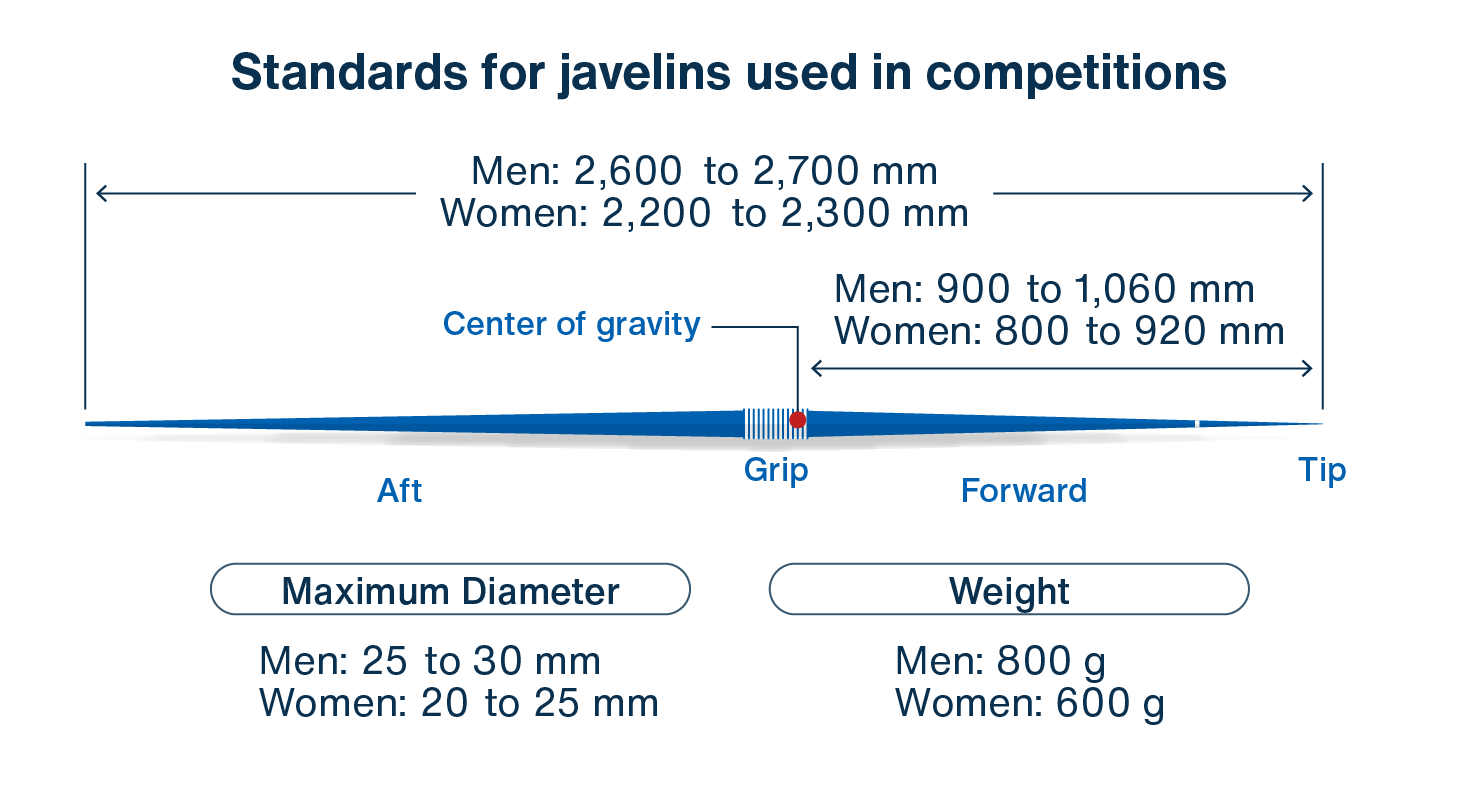
The javelin throw produces the greatest distances among throwing events
Unlike the hammer, discus, and shot put—in which the implements are thrown from within a circle—the javelin throw is executed by completely swinging the arm holding the spear while accelerating on a 30-meter runway (a spinning throw is prohibited). The throwing area is the inside of a 29° circular sector drawn on the multi-purpose grass area in the center of the field; the distance from the throwing arc (the starting line) to the point where the tip of the javelin landed within the sector is measured (invalid if any part other than the tip strikes the ground first). In a competition, the longest of three attempts becomes the record.
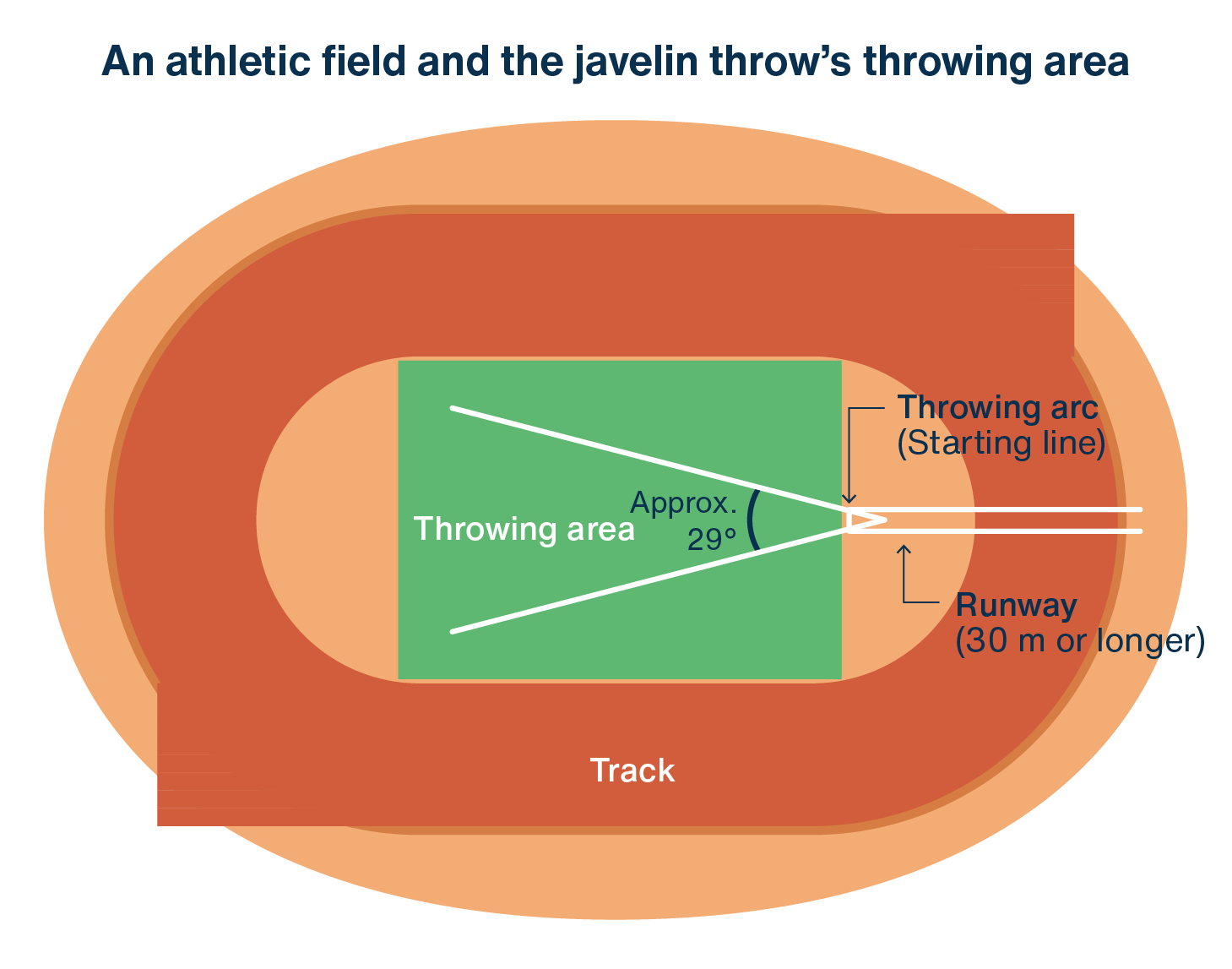
Javelin throw’s rules were revised to keep throws under 100 meters
The official world record for the men’s javelin throw stands at 98.48 meters (Jan Železný, 1996). What is less known is that an astonishing record, exceeding 100 meters (Uwe Hohn, 104.80 m), was achieved in 1984. If the distances continued to increase, it would have interfered with other events as well as posed hazards. Consequently, the rules were revised in 1986, shifting the javelin’s center of gravity forward by 4 centimeters. This had the effect of keeping throw distances under 100 meters (the current official world records count only those set since 1986 for men and 1999 for women).
Shown below are the men’s top ten world records set since the new rules went into effect. Jan Železný’s 98.48-meter record stands out, but 2020 saw Johannes Vetter approach the world record with 97.76 meters. Expectations are high for the world record—unbroken for more than two decades—to be overwritten at the 18th World Athletics Championships (Oregon22).
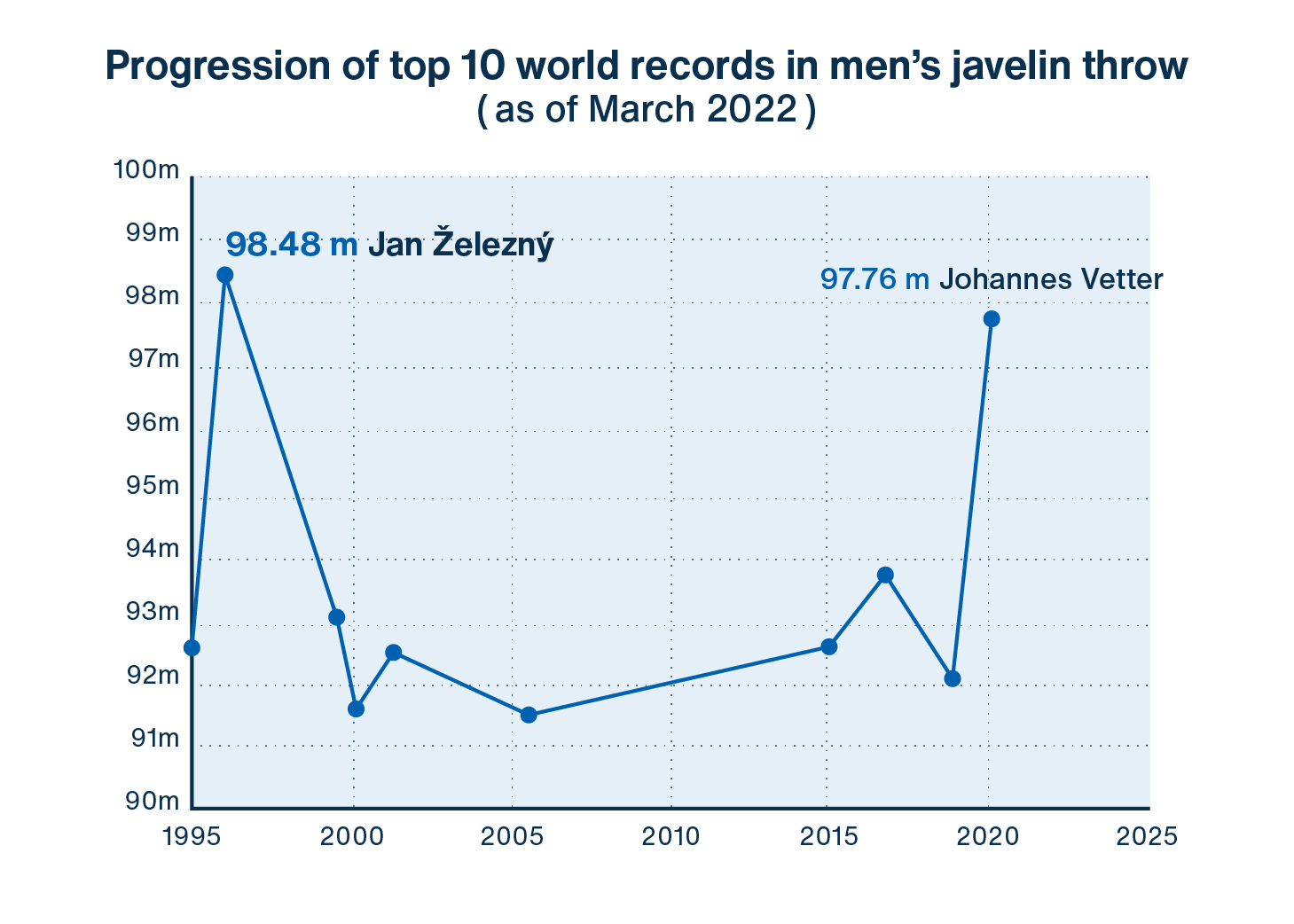
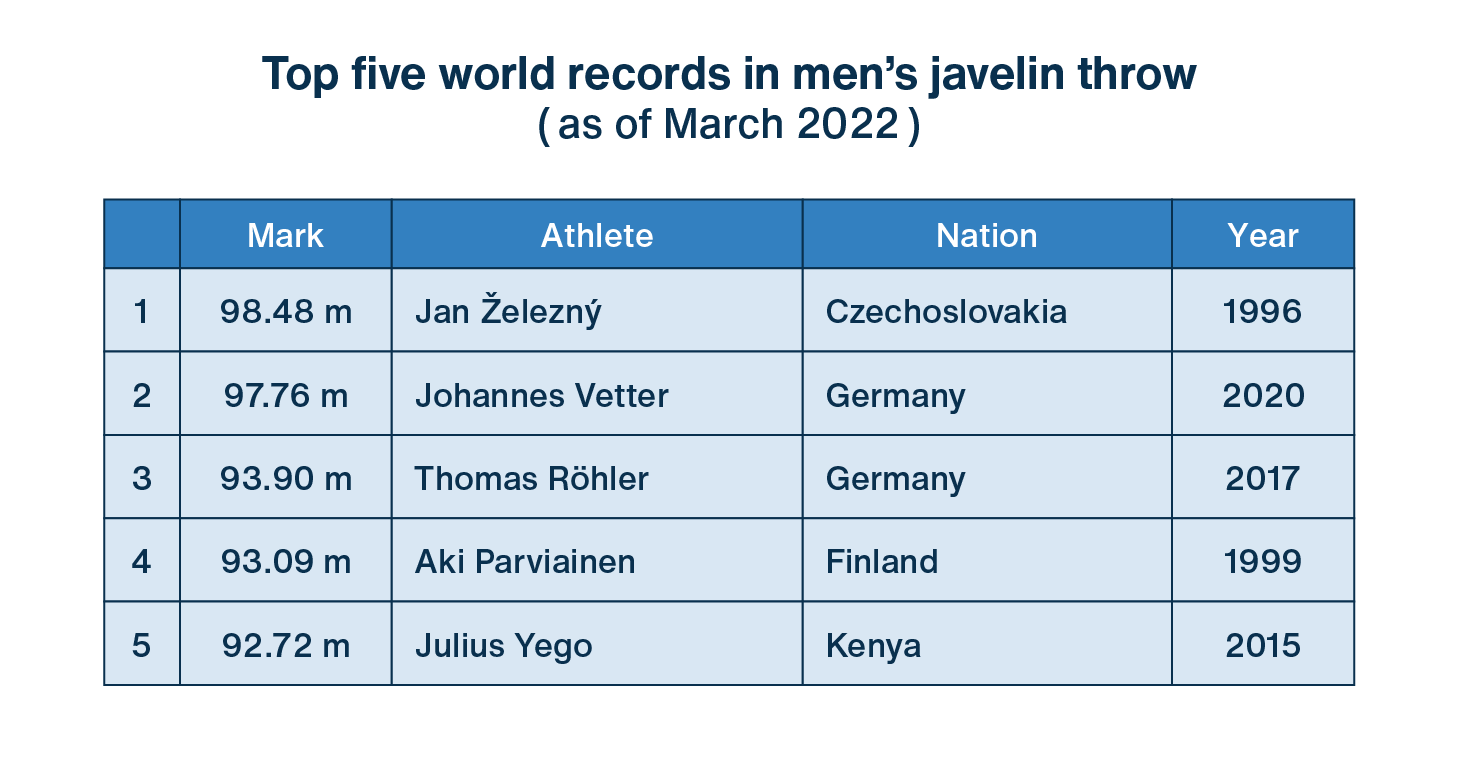
Athletes must target 73 meters or more to break the women’s javelin throw world record
Below are the top ten world records for the women’s javelin throw. The post-new-rule world record is 72.28 meters (Barbora Špotáková, 2008), but there are five records that exceeded 70 meters, and all eyes are on who will be the first to break the 73-meter barrier.
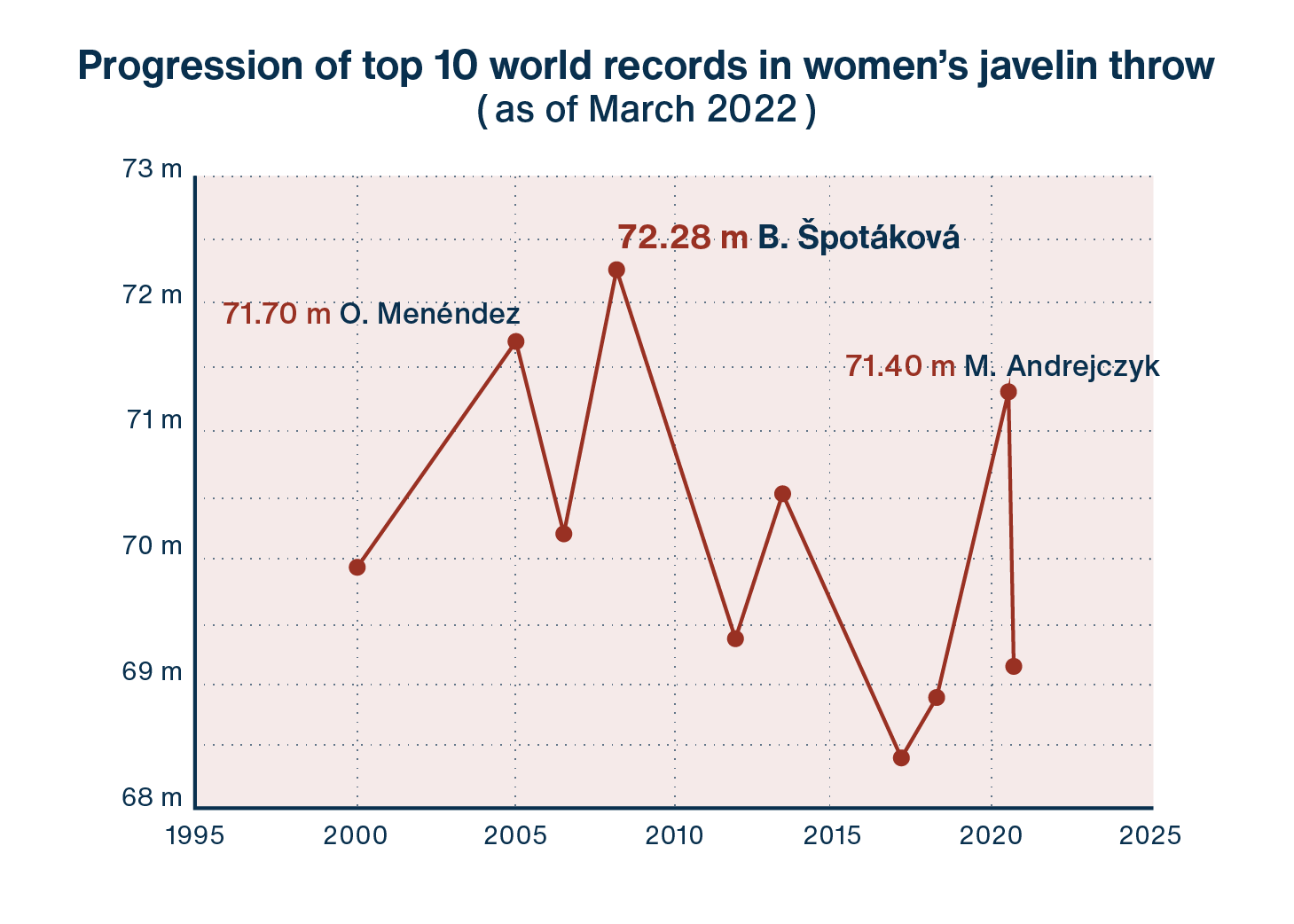
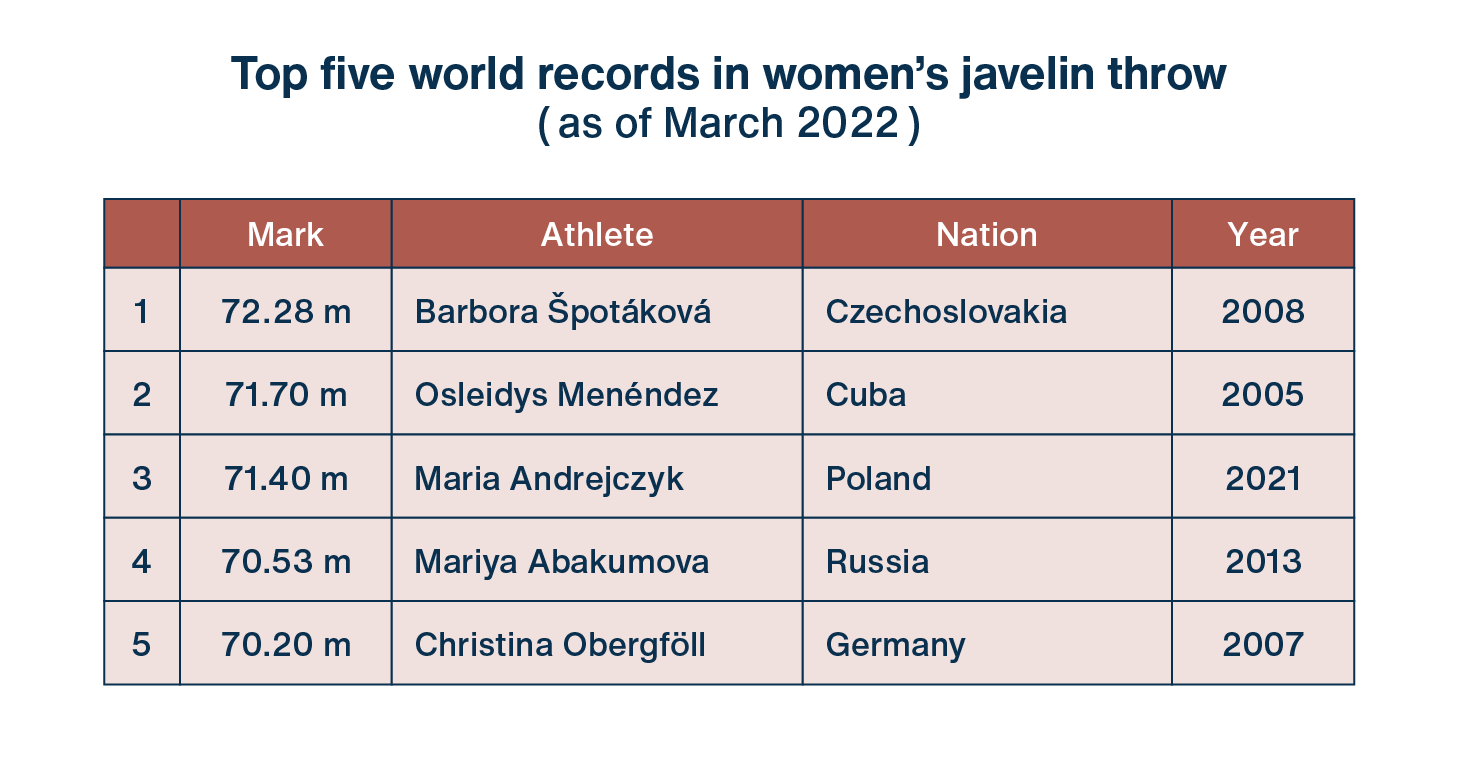
Factors that extend the javelin throw’s distance
Primary factors affecting the throw’s distance include:
• Run-up and mechanics
• Timing of release
• Aerodynamic lift
If a metal ball is compared to a javelin thrown at the same angle and initial speed, the javelin’s flight time and distance would be longer. This is due to the effect of aerodynamic lift. The javelin’s trajectory is visualized in the figure below; the green dashed line depicts the metal ball’s parabolic trajectory. The javelin’s flight path grows notably longer in the latter half of the throw. This resembles the flight of a paper airplane, which initially thrusts into the air but transitions into a gentle glide.
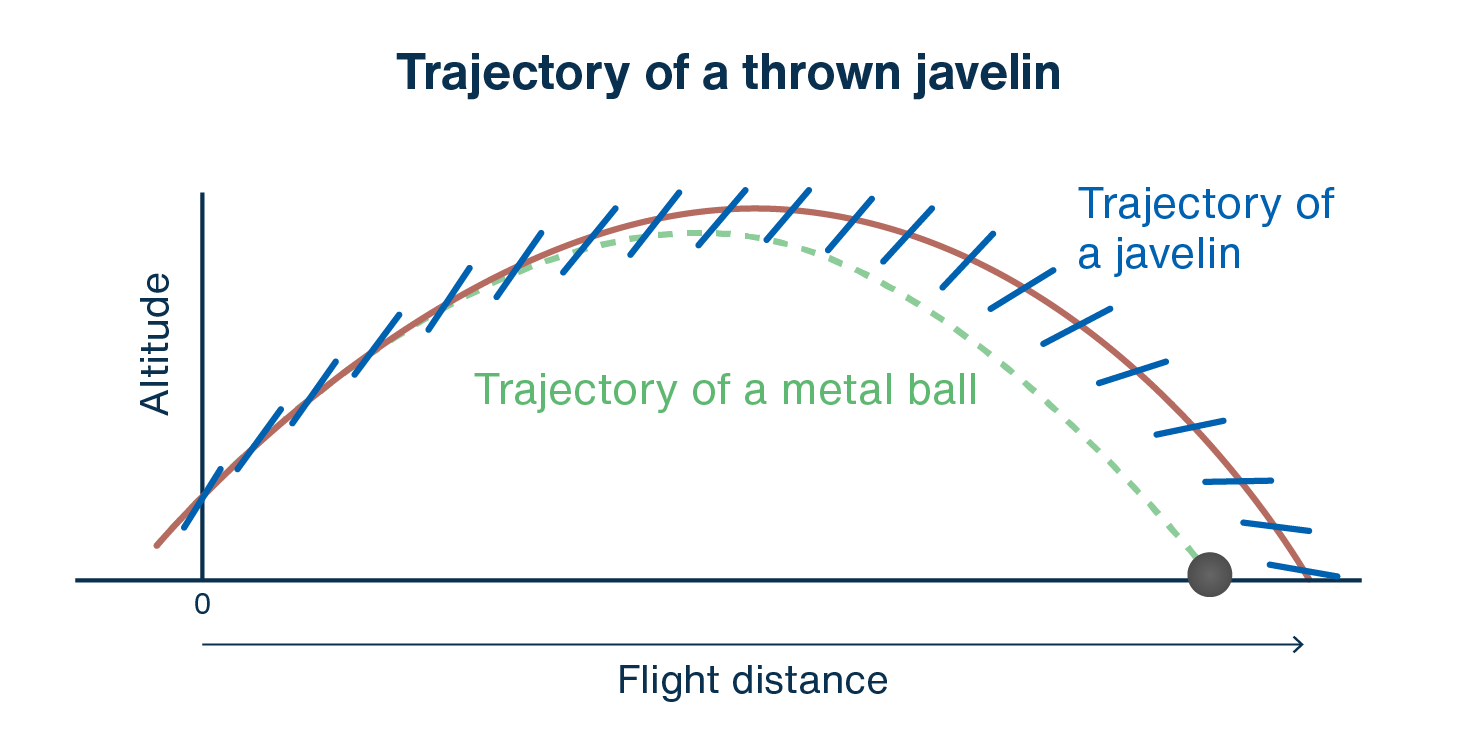
Mechanics and timing of release of a javelin throw
The mechanics and timing of the release greatly affect the throw’s distance. After gaining speed in the run-up, the thrower jumps, lands on the right foot, plants the left foot as the whole body is arched, then vigorously strikes the right arm to release the javelin (assuming a right-handed throw). This throwing motion lasts only about 0.4 seconds.
The analysis of a javelin thrown experimentally with an accelerometer attached shows the acceleration rising sharply during the last 0.1 seconds or so prior to release, as depicted in the graph below. The higher the highest value of the acceleration curve, the farther it flies. The key, therefore, is to shape the mechanics and time the release so as to transfer to the javelin the kinetic and muscular energy stored during the run-up—with as little loss as possible.
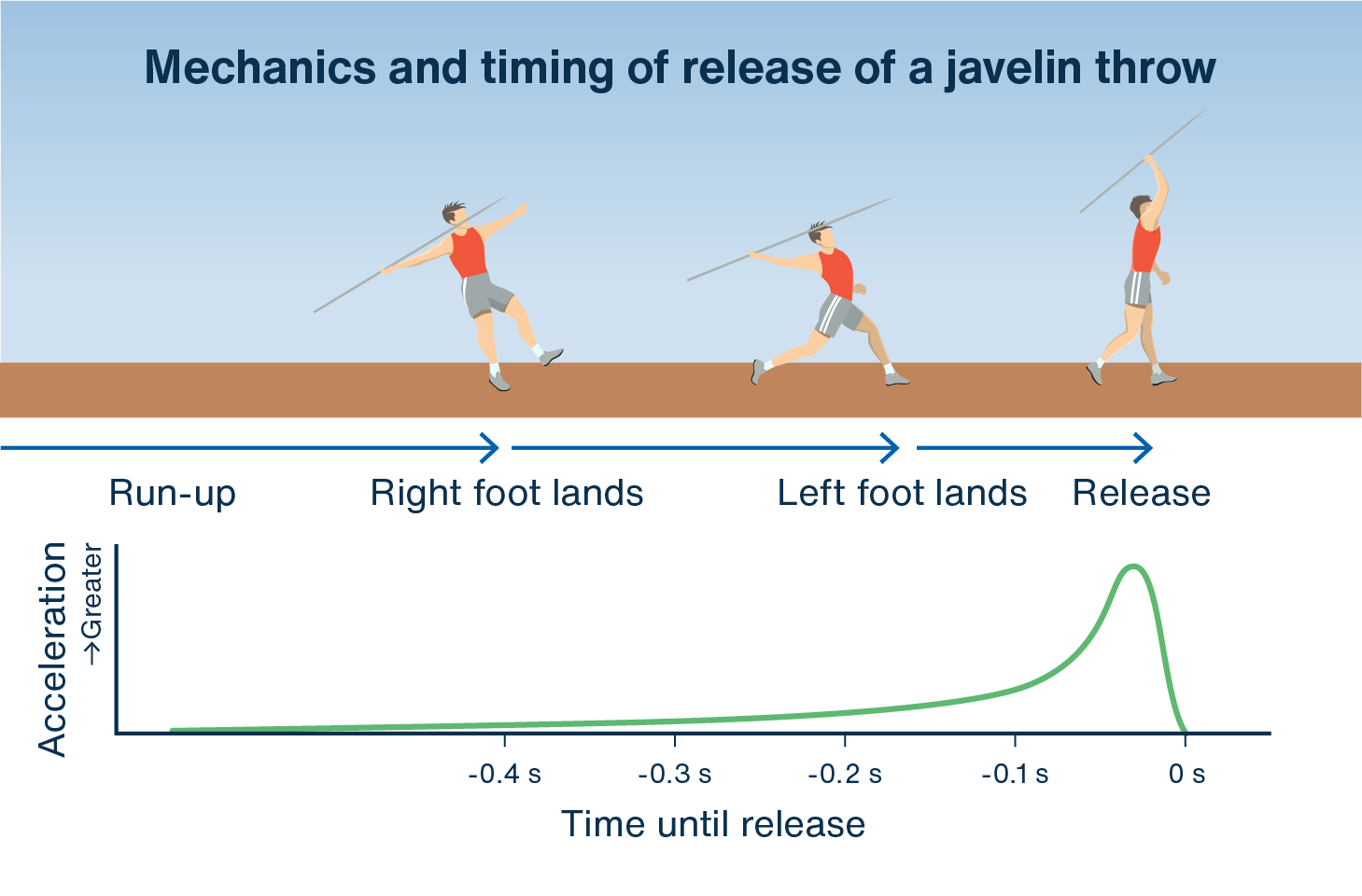
How angle of attack relates to aerodynamic lift
The javelin’s angle at the time of release closely relates to aerodynamic lift. As shown in the figure below, the difference between the pitch angle and the flight path angle (direction of flight) at the moment of release is called the angle of attack. If the angle of attack is too large, the javelin will quickly stall; if it is too small, lift will be limited. In either case, flight distance will suffer. For these reasons, it is critical to release the javelin at the optimal angle of attack, taking into consideration wind direction as well.
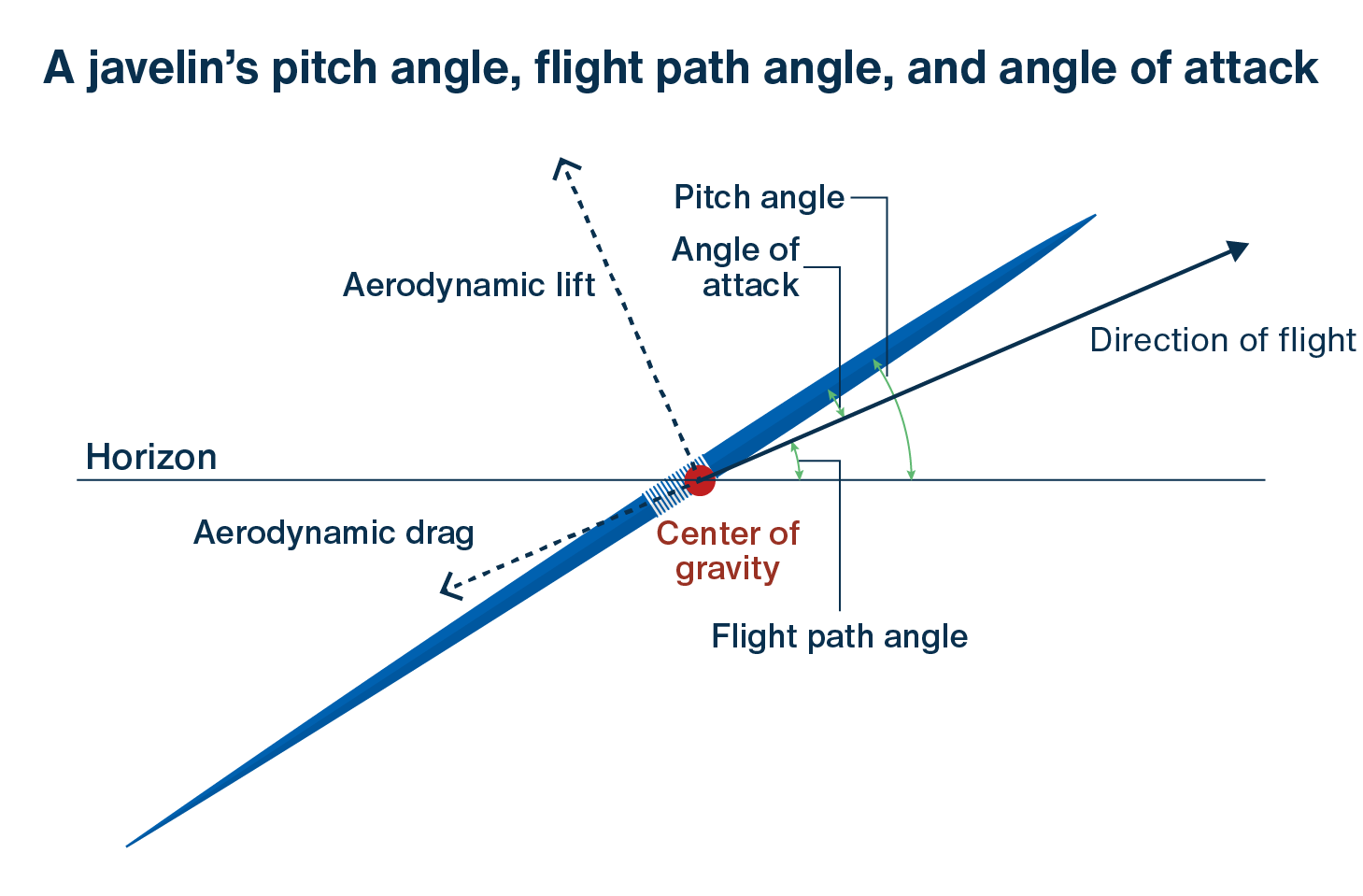
The flexure and vibration of the javelin also subtly affect the throw’s distance. It is said that a moderately flexible javelin is easier to throw, and one that quickly dampens flex and vibration after release flies farther.
While the dimensions, shape, weight, and center of gravity of a javelin are specified in detail, the internal structure and mass distribution are not. How flex and vibration affect flight distance have yet to be fully researched—so, depending on materials and design, exceeding 100 meters may come within reach.
TDK products and technologies supporting sports science: MEMS motion sensors
Motion sensors are among those sensors that utilize deflection and vibration. In addition to the so-called five senses (sight, hearing, smell, taste, and touch), humans have the sense of motion, which detects movement and orientation. This is how our bodies can feel starts, brakings, curves and slopes when riding a car with the eyes closed. Motion sensors correspond to this sense of motion.
MEMS motion sensors are composite sensors that combine an accelerometer and a gyroscopic (angular rate) sensor, manufactured using MEMS (micro-electro-mechanical system) methods—a microfabrication technology derived from semiconductor processes.
Both sensors consist of an oscillator supported on a silicon substrate, and comb-shaped movable and fixed electrodes. For example, a MEMS accelerometer computes acceleration by detecting changes in electrostatic capacitance between the electrodes engendered by the oscillator’s deflection when acceleration is occurring. The working principle of a MEMS accelerometer is shown in the figure below (it is a simplified version; the actual structure is more complex).
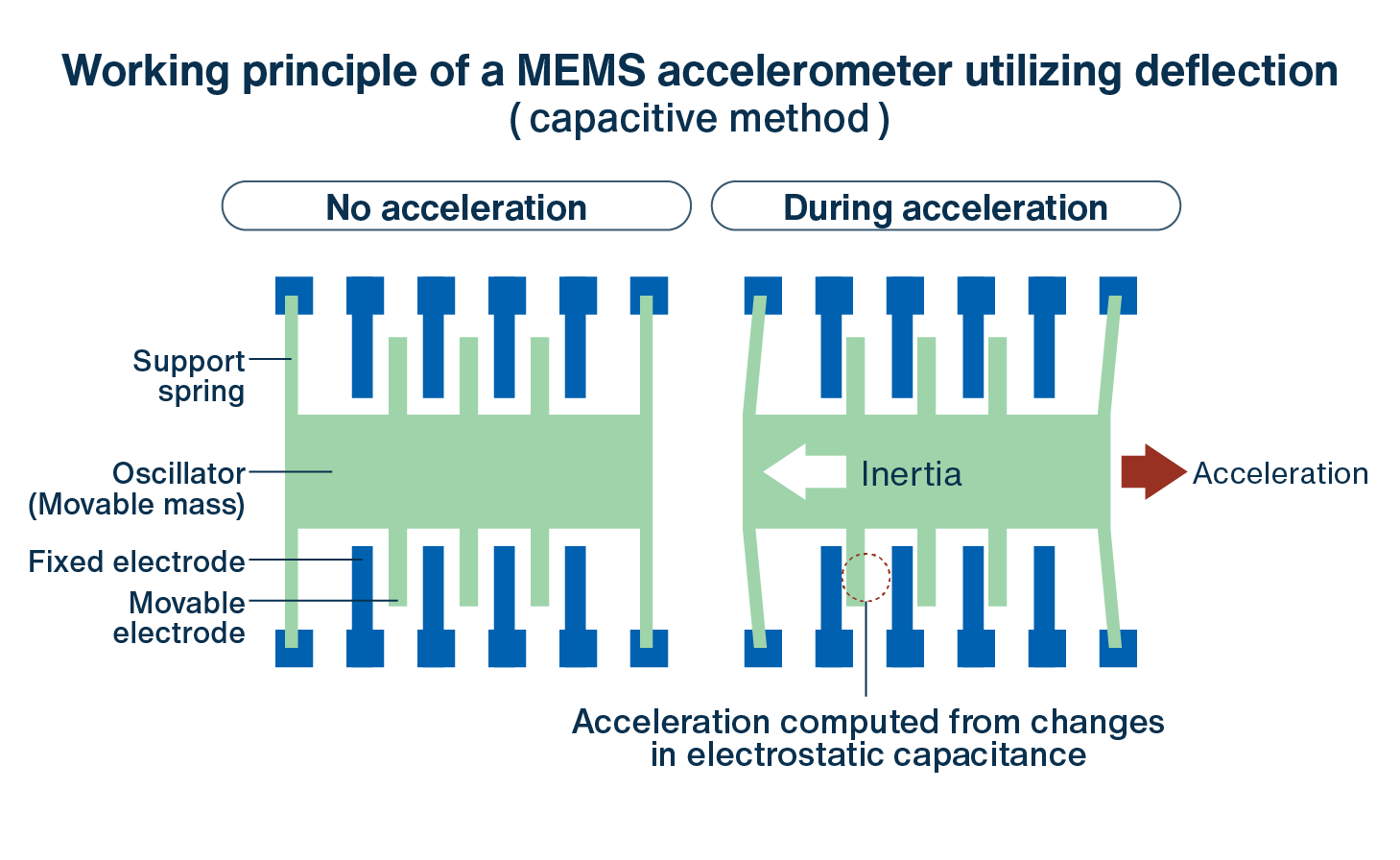
TDK’s IMUs (Inertial Measurement Units) are compact, high-performance motion sensors that integrate MEMS accelerometers and MEMS gyroscopic sensors into single packages.
A range of products are offered, including 6-axis IMUs comprised of 3-axis accelerometers and 3-axis gyro sensors, 7-axis IMUs that integrate a barometric pressure sensor, and 9-axis IMUs that integrate a 3-axis magnetic sensor (electronic compass). They are widely utilized in drones, smartphones, robotics, car navigation systems, and many IoT devices.
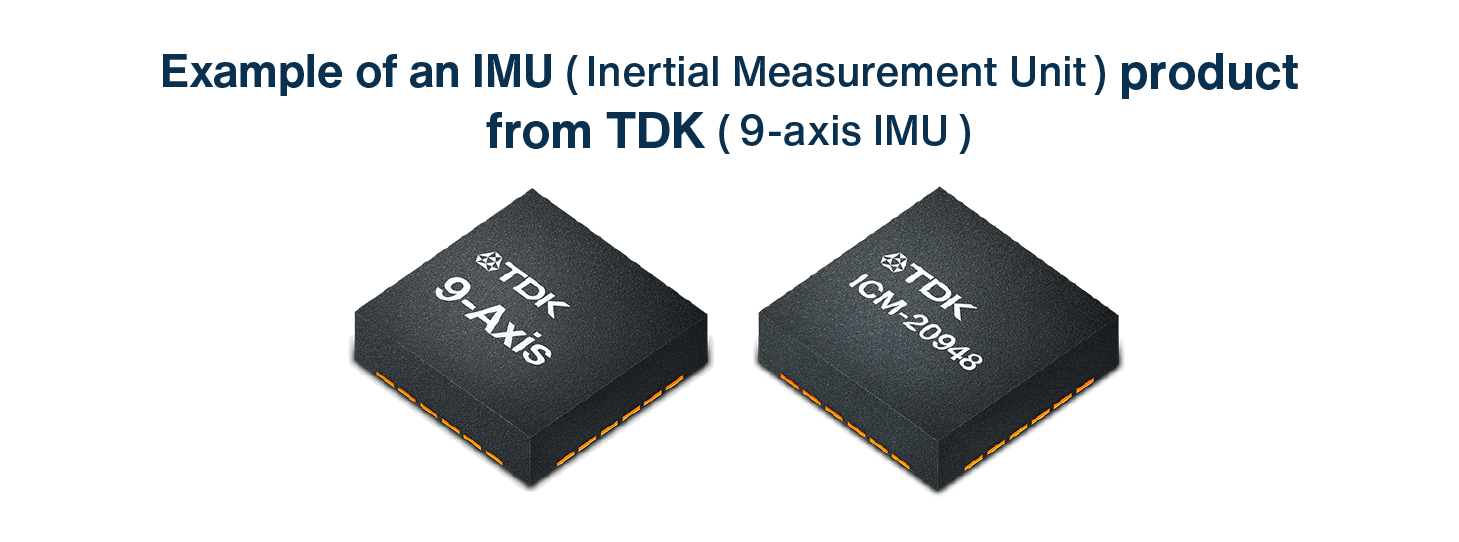
TDK is a comprehensive electronic components manufacturer leading the world in magnetic technology







